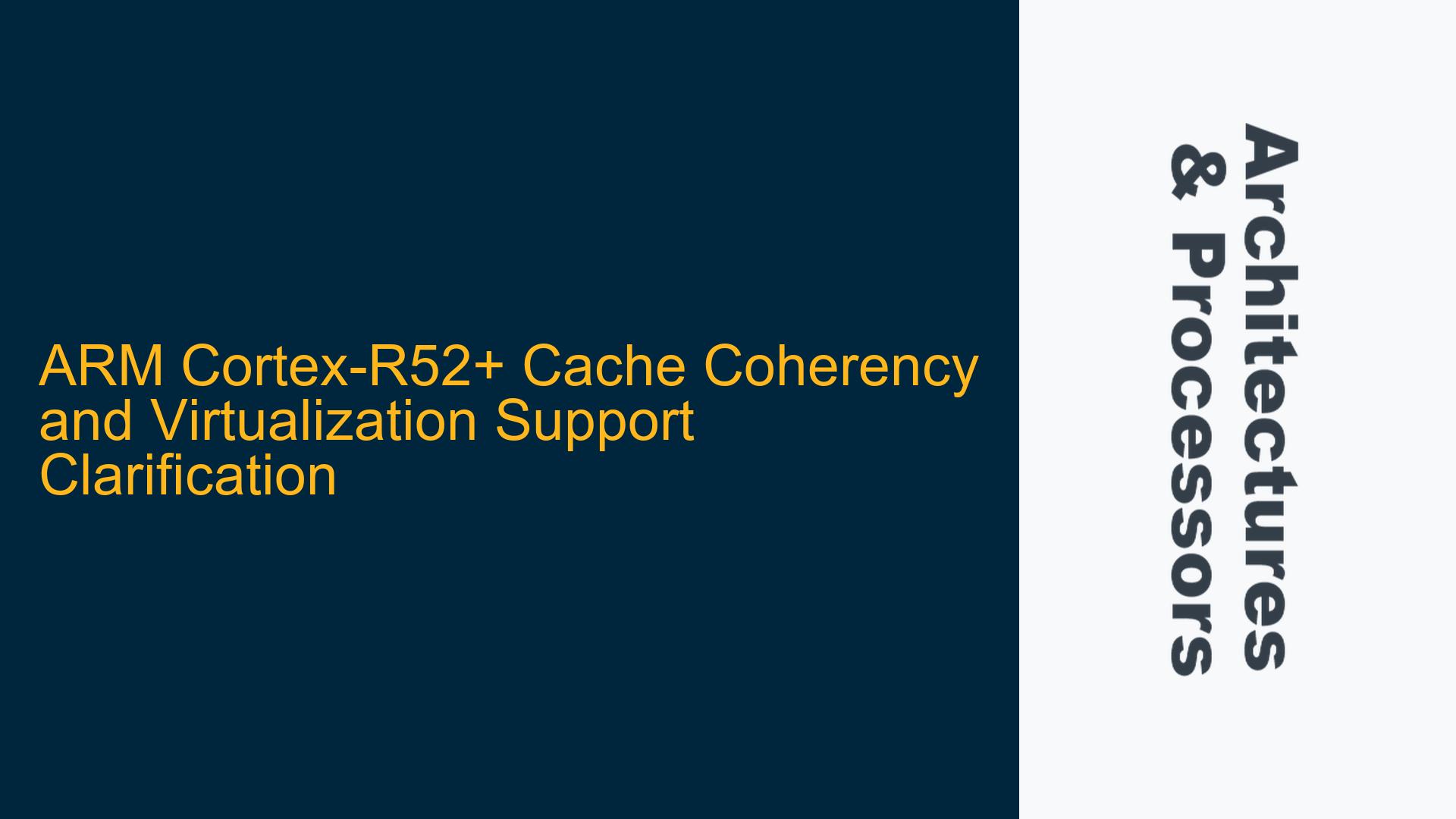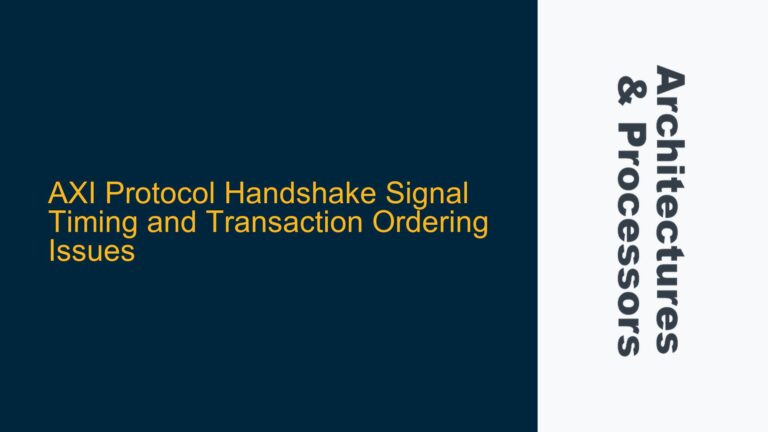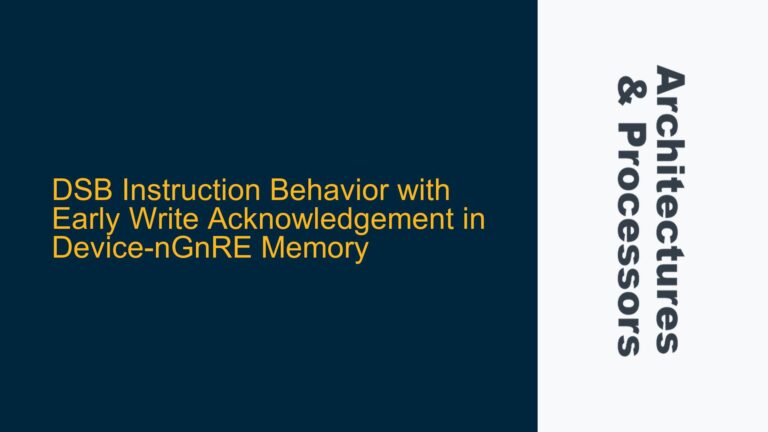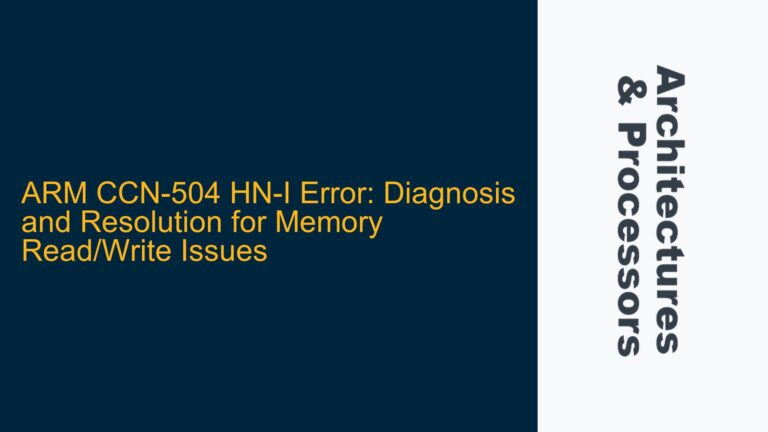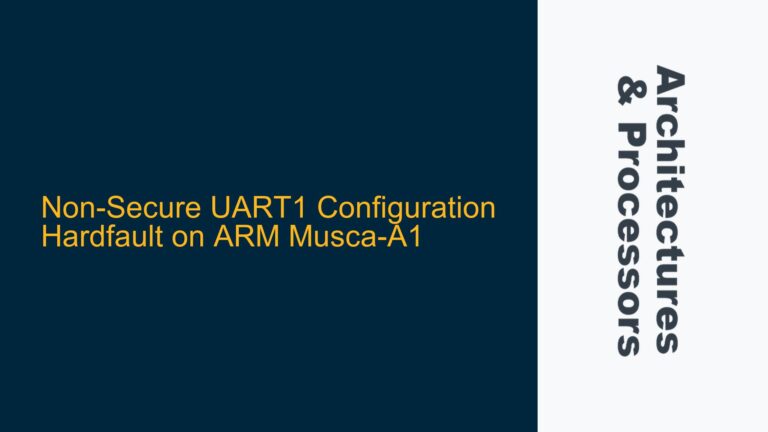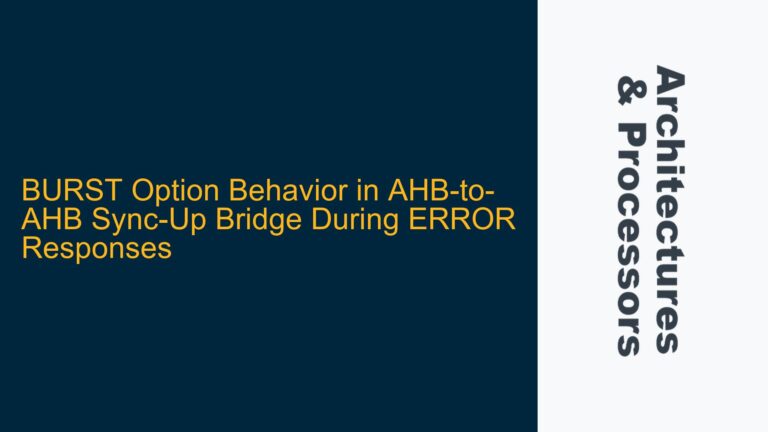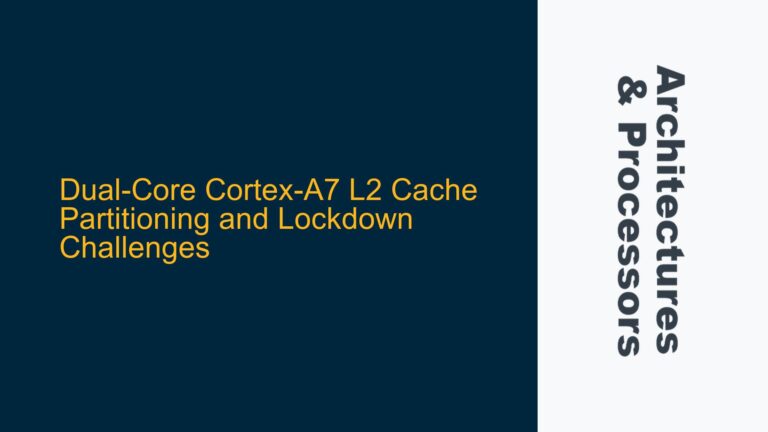ARM Cortex-R52+ Cache Coherency and Multi-Core Support
The ARM Cortex-R52+ is a real-time processor designed for safety-critical applications, offering high performance and deterministic behavior. One of the key points of confusion surrounding the Cortex-R52+ is its support for cache coherency in multi-core configurations. Cache coherency is a critical feature in multi-core systems, ensuring that all cores have a consistent view of memory. Without cache coherency, different cores may have different versions of the same data, leading to unpredictable behavior and potential system failures.
The Cortex-R52+ does not support cache coherency across cores within the same cluster. This means that if you are designing a multi-core system using the Cortex-R52+, you cannot rely on hardware-based cache coherency mechanisms to maintain consistency between the caches of different cores. This is a significant limitation, especially in systems where multiple cores need to share data frequently. The lack of cache coherency requires software-based solutions to ensure data consistency, which can be complex and may introduce performance overhead.
The Cortex-R52+ supports up to four cores in a uniprocessor (UP4) configuration, but these cores do not share a coherent cache. This is in contrast to other ARM processors, such as the Cortex-A series, which do support cache coherency across multiple cores. The Cortex-R52+ is designed for real-time applications where determinism and reliability are more critical than raw performance, and the lack of cache coherency is a trade-off to achieve these goals.
In summary, the Cortex-R52+ does not support cache coherency across cores, which means that software must handle data consistency between cores. This is an important consideration when designing multi-core systems using the Cortex-R52+, as it impacts both the complexity of the software and the overall system performance.
Virtualization Support in ARM Cortex-R52+ and Its Implications
The ARM Cortex-R52+ supports virtualization extensions, including the EL2 (Exception Level 2) hypervisor mode. Virtualization allows multiple operating systems or real-time operating systems (RTOS) to run concurrently on the same hardware, each in its own virtual machine (VM). This is particularly useful in safety-critical systems where different applications with different safety requirements need to be isolated from each other.
The Cortex-R52+ supports the ARMv8-R architecture, which includes virtualization features such as the Virtualization Extensions and the Memory Protection Unit (MPU). These features allow the Cortex-R52+ to run a hypervisor that can manage multiple VMs, each with its own memory space and resources. The hypervisor ensures that each VM is isolated from the others, preventing one VM from interfering with another.
However, the lack of cache coherency in the Cortex-R52+ introduces challenges when implementing virtualization. In a multi-core system without cache coherency, the hypervisor must ensure that data shared between VMs is consistent across all cores. This requires careful management of memory barriers and cache invalidation to prevent data corruption or inconsistencies.
The Cortex-R52+ supports virtualization in a non-coherent multi-core environment, which means that the hypervisor must handle cache management explicitly. This can be done using software-based cache management techniques, such as flushing or invalidating caches when necessary. While this adds complexity to the hypervisor, it is a necessary trade-off to achieve the benefits of virtualization in a real-time system.
In summary, the Cortex-R52+ supports virtualization, including EL2 hypervisor mode, but the lack of cache coherency requires careful management of caches in a multi-core environment. This is an important consideration when designing a virtualized system using the Cortex-R52+, as it impacts both the complexity of the hypervisor and the overall system performance.
Implementing Cache Management and Virtualization in ARM Cortex-R52+
Implementing a multi-core system with the ARM Cortex-R52+ requires careful consideration of cache management and virtualization. The lack of hardware-based cache coherency means that software must handle data consistency between cores, which can be complex and may introduce performance overhead. Additionally, the support for virtualization in the Cortex-R52+ requires careful management of caches to ensure that data shared between virtual machines is consistent across all cores.
Cache Management in a Non-Coherent Multi-Core System
In a non-coherent multi-core system, each core has its own cache, and there is no hardware mechanism to ensure that the caches are consistent with each other. This means that if one core modifies a piece of data, the other cores may not see the updated value unless the cache is explicitly managed. This can lead to data corruption or inconsistencies if not handled properly.
To manage caches in a non-coherent multi-core system, software must use memory barriers and cache maintenance operations. Memory barriers ensure that memory operations are performed in the correct order, preventing reordering that could lead to inconsistencies. Cache maintenance operations, such as cache flushing or invalidation, ensure that the caches are updated with the latest data.
For example, if one core modifies a piece of data that is shared with another core, the software must ensure that the modified data is written back to main memory and that the other core’s cache is invalidated before it accesses the data. This can be done using the Data Synchronization Barrier (DSB) and Data Memory Barrier (DMB) instructions, which ensure that memory operations are completed before proceeding. Additionally, the Invalidate Data Cache (IDC) instruction can be used to invalidate the cache of the other core, ensuring that it fetches the updated data from main memory.
Virtualization in a Non-Coherent Multi-Core Environment
Virtualization in a non-coherent multi-core environment adds another layer of complexity, as the hypervisor must ensure that data shared between virtual machines is consistent across all cores. This requires careful management of caches and memory barriers to prevent data corruption or inconsistencies.
The hypervisor must ensure that when a virtual machine modifies a piece of data, the modified data is written back to main memory and that the caches of other cores are invalidated before they access the data. This can be done using the same cache maintenance operations and memory barriers as in a non-virtualized system, but the hypervisor must also ensure that these operations are performed in the correct context for each virtual machine.
For example, if one virtual machine modifies a piece of data that is shared with another virtual machine, the hypervisor must ensure that the modified data is written back to main memory and that the caches of the other virtual machine’s cores are invalidated before they access the data. This can be done using the DSB and DMB instructions, as well as the IDC instruction, but the hypervisor must also ensure that these operations are performed in the context of the correct virtual machine.
Best Practices for Cache Management and Virtualization in Cortex-R52+
When implementing a multi-core system with the ARM Cortex-R52+, it is important to follow best practices for cache management and virtualization to ensure data consistency and system reliability. These best practices include:
-
Use Memory Barriers and Cache Maintenance Operations: Ensure that memory barriers and cache maintenance operations are used correctly to maintain data consistency between cores. This includes using the DSB, DMB, and IDC instructions to ensure that memory operations are completed and that caches are updated with the latest data.
-
Implement a Robust Hypervisor: If virtualization is used, ensure that the hypervisor is robust and handles cache management correctly. This includes ensuring that cache maintenance operations are performed in the correct context for each virtual machine and that memory barriers are used to prevent reordering of memory operations.
-
Minimize Shared Data: Minimize the amount of data shared between cores or virtual machines to reduce the complexity of cache management. This can be done by using message passing or other communication mechanisms to share data between cores or virtual machines, rather than sharing data directly in memory.
-
Test Thoroughly: Thoroughly test the system to ensure that data consistency is maintained and that there are no race conditions or data corruption issues. This includes testing the system under different workloads and scenarios to ensure that it behaves correctly in all cases.
In summary, implementing a multi-core system with the ARM Cortex-R52+ requires careful consideration of cache management and virtualization. The lack of hardware-based cache coherency means that software must handle data consistency between cores, which can be complex and may introduce performance overhead. Additionally, the support for virtualization in the Cortex-R52+ requires careful management of caches to ensure that data shared between virtual machines is consistent across all cores. By following best practices for cache management and virtualization, you can ensure that your system is reliable and performs well in a real-time environment.
